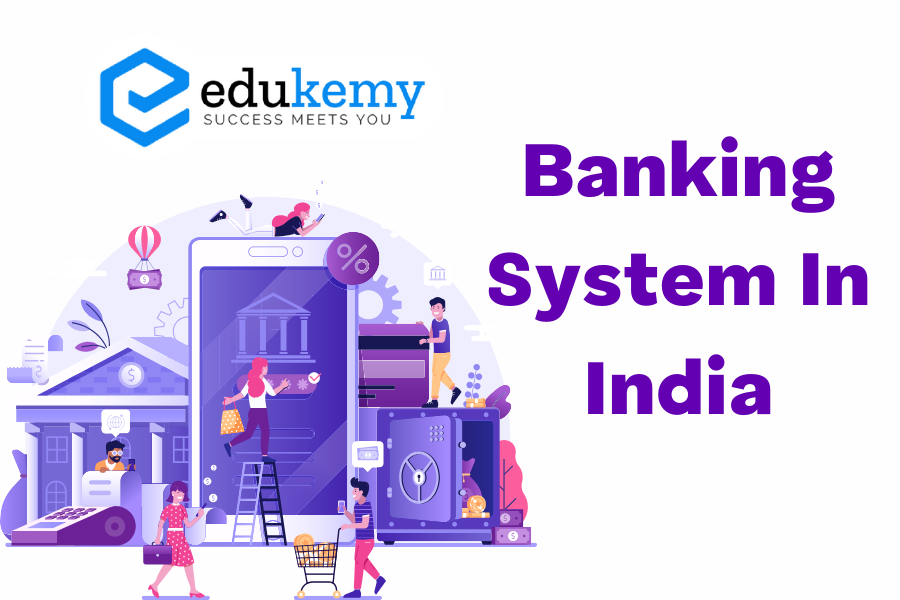
In India, the banking system serves as a crucial financial intermediary, facilitating transactions between savers and borrowers. Its core functions include accepting public deposits and providing loans to both businesses and consumers. The primary components of a bank’s balance sheet consist of deposits as liabilities and loans as assets.
Contents
- 1 Types of Banks in India:
- 2 FAQs
- 2.1 1. What is the Reserve Bank of India (RBI), and what is its role in the Indian banking system?
- 2.2 2. What are the types of banks in India, and how do they differ?
- 2.3 3. How does the Indian banking system ensure financial inclusion and reach underprivileged sections of society?
- 2.4 4. What is the role of technology in modernizing the Indian banking sector?
- 2.5 5. How does the Indian banking system address challenges such as non-performing assets (NPAs) and fraud?
- 3 In case you still have your doubts, contact us on 9811333901.
Types of Banks in India:
- Commercial Banks:
- Domestic Public Sector Banks
- Domestic Private Sector Banks
- Foreign Banks
- Regional Rural Banks
- Payments Banks
- Small Finance Banks
- Co-operative Banks:
- Cooperative banks differ from commercial banks in that their customers are also the owners, adhering to the cooperative principle of one person, one vote. They are registered under the Cooperative Societies Act, 1912, and regulated by the Reserve Bank of India under the Banking Regulation Act, 1949, and Banking Laws (Application to Cooperative Societies) Act, 1965.
- Land Development Banks:
- Originally known as Land Mortgage Banks, they are presently referred to as State Co-operative Agriculture and Rural Development Banks (SCARDBs). These banks provide long-term financing for agriculturists, supporting the purchase of agricultural machinery such as tractors for land improvement. This type of credit requirement is typically unmet by commercial and cooperative banks due to their focus on short-term deposits.
- Investment Banks/Merchant Banks:
- These banks primarily engage with firms, earning them the designation of merchant banks. More details on their role in the capital market are discussed in the chapter on capital markets.
- Development Banks:
- Development banks play a crucial role in providing long-term finance and support to sectors of the economy characterized by higher risks. Sectors and subsectors unable to access sufficient loans from commercial banks benefit from institutions such as Small Industries and Development Bank of India (SIDBI), MUDRA Bank (Micro Units Development and Refinance Agency Bank), National Housing Bank (NHB), among others.
Note: Except commercial and cooperative banks, none of the mentioned banks accept demand deposits, which are deposits withdrawable through cheques.
FAQs
1. What is the Reserve Bank of India (RBI), and what is its role in the Indian banking system?
- The Reserve Bank of India (RBI) is India’s central banking institution, established in 1935. Its primary role is to regulate the country’s monetary policy and currency issuance. RBI oversees the functioning of commercial banks, formulates banking regulations, and manages foreign exchange reserves to maintain financial stability.
2. What are the types of banks in India, and how do they differ?
- India’s banking system comprises various types of banks, including commercial banks (public sector, private sector, and foreign banks), regional rural banks (RRBs), cooperative banks, and development banks (like NABARD, SIDBI). Commercial banks serve general banking needs, while RRBs focus on rural areas, and cooperative banks are owned and operated by their members. Development banks cater to specific sectors like agriculture, small industries, and exports.
3. How does the Indian banking system ensure financial inclusion and reach underprivileged sections of society?
- The Indian banking system has implemented various initiatives to promote financial inclusion, such as the Pradhan Mantri Jan Dhan Yojana (PMJDY), which aims to provide access to financial services like savings accounts, insurance, and pension schemes to the unbanked population. Additionally, schemes like the MUDRA Bank and SHG-Bank linkage program facilitate credit access to small entrepreneurs and self-help groups.
4. What is the role of technology in modernizing the Indian banking sector?
- Technology has played a significant role in modernizing the Indian banking sector, leading to the introduction of online banking, mobile banking, and digital payment systems. Core banking solutions (CBS) enable seamless integration of banking services across branches, and initiatives like the Unified Payments Interface (UPI) have revolutionized peer-to-peer payments. Moreover, the adoption of biometric authentication and blockchain technology enhances security and efficiency in banking operations.
5. How does the Indian banking system address challenges such as non-performing assets (NPAs) and fraud?
- Non-performing assets (NPAs) and fraud are significant challenges faced by the Indian banking system. The RBI implements measures like prompt corrective action (PCA) to address NPAs by monitoring banks’ performance and enforcing corrective measures when necessary. Additionally, banks employ risk management strategies, stringent loan appraisal processes, and enhanced surveillance mechanisms to mitigate fraud risks. Collaborative efforts between regulatory bodies, law enforcement agencies, and banks are essential to combat financial fraud effectively.
In case you still have your doubts, contact us on 9811333901.
For UPSC Prelims Resources, Click here
For Daily Updates and Study Material:
Join our Telegram Channel – Edukemy for IAS
- 1. Learn through Videos – here
- 2. Be Exam Ready by Practicing Daily MCQs – here
- 3. Daily Newsletter – Get all your Current Affairs Covered – here
- 4. Mains Answer Writing Practice – here

